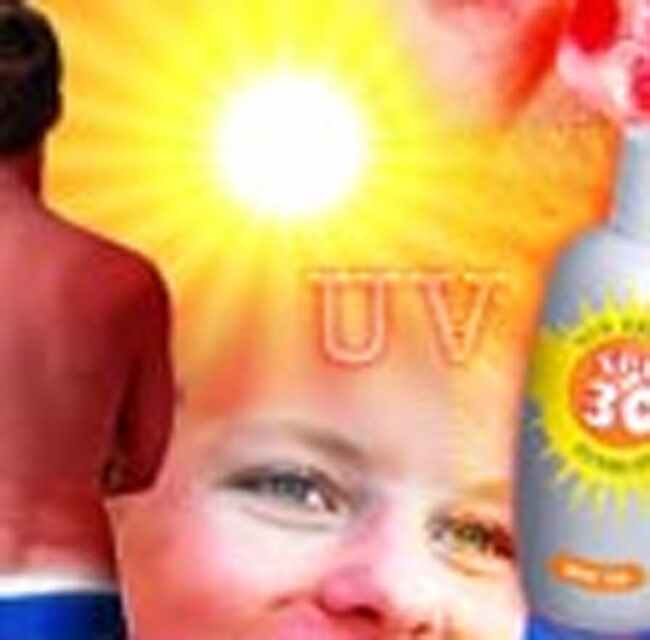Most Sunscreens Fail to Protect

The simple rule of sunscreen — the higher the SPF and the thicker the slather, the better — has come under doubt.
The Environmental Working Group (EWG), a Washington-based research group and habitual gadfly to the business world, has found that 4 out of 5 of the nearly 1,000 sunscreen lotions analyzed offer inadequate protection from the sun or contain harmful chemicals. The biggest offenders, the EWG said, are the industry leaders: Coppertone, Banana Boat and Neutrogena.
While 3 out of 3 industry leaders are rather upset with the EWG report, and while some dermatologists criticize it for hyperbole, the report does underscore several long-standing health concerns:
Sunscreens do not offer blanket protection from the sun and do little to prevent the most deadly form of skin cancer; reliance on them instead of, say, a hat and protective clothing, might be contributing to skin cancer; and the Food and Drug Administration has yet to issue any safety standards, mysteriously sitting on a set of recommendations drafted 30 years ago.
Subcutaneous homesick blues
Sunlight contains ultraviolet radiation, largely in two forms: UVA and UVB. Aside from sunburn, UVB exposure causes the most common forms of skin cancer — basal cell carcinoma, which is rarely deadly and mostly only disfiguring, and squamous cell carcinoma, which can turn deadly about 1 percent of the time.
UVA penetrates the skin more deeply and causes wrinkling. Recent research, however, has found that UVA exacerbates the carcinogenic effects of UVB and might cause skin cancer itself.
Sign up for the Live Science daily newsletter now
Get the world’s most fascinating discoveries delivered straight to your inbox.
Most sunscreens block only UVB. And the SPF system, short for Sun Protection Factor, refers only to UVB. SPF provides an estimate of a lotion's level of sunburn protection. If you start burning in about 30 minutes, then SPF 15 will allow you to stay in the sun 15 times longer before getting burned, in theory.
SPF of 1 zillion
Total UV protection is within reach and has been used for millennia. It's called clothing. Unfortunately this isn't so convenient when summertime fun calls for minimal clothing.
The EWG report takes an ax to the loose SPF claims. Almost all sunscreen lotions contain chemicals that, perhaps counter-intuitively, breakdown in the presence of sunlight. But in fact this is how they block UVB from penetrating the skin, like a castle wall protecting against cannonballs until the wall crumbles.
Notions of all-day protection, as some sunscreen products claim, or even several hours of protection are ludicrous, the EWG said, because most sunscreens start deteriorating in as quickly as 15 minutes. This doesn't even account for sweat and casual rubbing, further reducing protection.
Also, few sun-worshipers use the recommended shot-glass-amount of lotion with each application. We merely think we are protected; few really are.
Controversy, not just skin deep
The EWG also trashed any lotion containing harmful chemicals that can easily penetrate the skin. Oxybenzone, which blocks UVA, is a main offender. The U.S. Centers for Disease Control and Prevention has found oxybenzone in the urine of just about everyone tested.
This chemical can promote DNA damage in the presence of sunlight. Oxybenzone and similar cancer-causing chemicals in sunscreens contribute to the minority view that sunscreens actually cause more and deadlier cancers than they prevent. Several small studies have found an increased risk of malignant melanoma, by far the deadliest form of skin cancer, among regular users of sunscreens.
Many zinc-based protects appear to be safe, according to the EWG. Until the FDA breaks its silence and offers some guidance, there's the EWG list of recommendations at http://www.cosmeticsdatabase.com/special/sunscreens2008. Or you can move to Seattle.
- You and the Sun: 10 Burning Questions
- Little Known Facts about Skin Cancer
- Bad Habits: Why We Can't Stop
Christopher Wanjek is the author of the books "Bad Medicine" and "Food At Work." Got a question about Bad Medicine? Email Wanjek . If it's really bad, he just might answer it in a future column. Bad Medicine appears each Tuesday on LiveScience.

Christopher Wanjek is a Live Science contributor and a health and science writer. He is the author of three science books: Spacefarers (2020), Food at Work (2005) and Bad Medicine (2003). His "Food at Work" book and project, concerning workers' health, safety and productivity, was commissioned by the U.N.'s International Labor Organization. For Live Science, Christopher covers public health, nutrition and biology, and he has written extensively for The Washington Post and Sky & Telescope among others, as well as for the NASA Goddard Space Flight Center, where he was a senior writer. Christopher holds a Master of Health degree from Harvard School of Public Health and a degree in journalism from Temple University.









